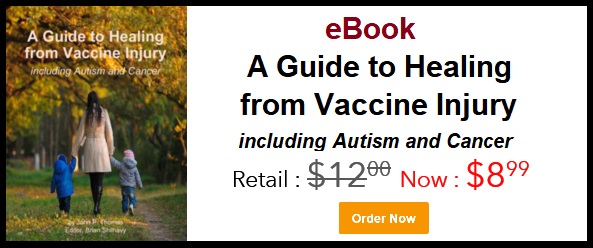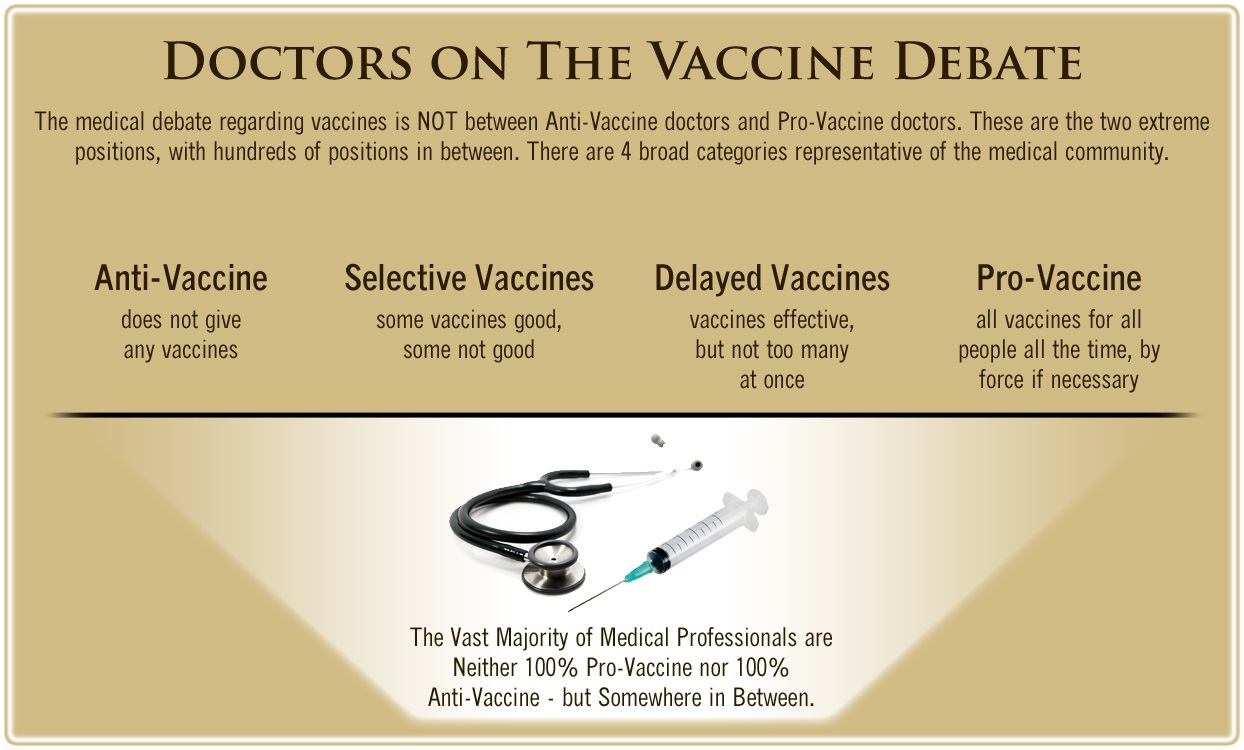by Jefferey Jaxen
Health Impact News
October is deemed the start of the flu season. This year, the rhetoric and methods to push flu vaccines are beginning to take on an authoritarian flavor. Medical consent and medical choice appear to have taken a backseat to government mandates and strong arm tactics by local pharmacies, medical practitioners, and employers. Government oversight bodies and medical professionals are omitting the risks and informed consent when it comes to the flu shot. To understand this year’s flu vaccination push, here are some points to put things into focus.
Fear the Flu, Ignore the Data
In 2009, the U.S. faced a public health emergency as the Center’s for Disease Control and Prevention (CDC) and World Health Organization (WHO) declared the H1N1 flu a “pandemic.” This fear-based event attempted to solidify the importance of the flu shot each season as the U.S. aims for a 90 percent flu vaccination rate in the next 5 years. During that 2009 “pandemic,” a CBS investigation led by Sharyl Attkisson reported the following:
By the third week in July, the CDC advised states to stop testing for individual cases of H1N1 flu and they stopped counting individual cases.
At the time, the CDC’s website explained that states are no longer differentiating between the regular flu and the swine flu, reporting instead all influenza and pneumonia-related hospitalizations and deaths in one count. This technique greatly, and inaccurately, inflated the flu numbers used to justify the current and future vaccine policy of the time.
In 2009, The WHO declared a Level 6 Pandemic, the highest possible category. At the time, the WHO’s call for a Level 6 Pandemic was based on 20 cases. A year after the H1N1 bluff, a report in the journal of Clinical Infectious Disease estimated that a total of 12,469 deaths resulted from the H1N1 flu strain. The WHO’s website states that annually, there are 250,000 to 500,000 deaths from the flu making their 2009 “pandemic” call clearly transparent and done to scare populations into taking flu shots and steer policy.
The Pandemrix vaccine, one of the flu shots pushed during the 2009 “pandemic,” was manufactured by pharmaceutical giant GlaxoSmithKline. A court has recently awarded brain-damaged victims of the Pandemrix a $60 million compensation. As it stands today, according to the CDC’s website:
…flu deaths in adults are not nationally reportable, and therefore, CDC cannot say how many adults die from flu each year.
Drug Companies Just Guess on Flu Strains
Throughout the U.S. and Canada, official reports regarding the effectiveness of vaccines have been dismal. This is due to the fact that manufacturers, along with researchers, are taking a guess as to what strains may be prominent each year.
How well has that worked? The CDC reported that their 2014 flu shot effectiveness was only 23 percent. British Columbia’s provincial health officer, Dr. Perry Kendall recently reported that Canada’s 2015 flu shot appears to be only 30-50 percent effective. However, this is better than last year’s Canadian flu shot effort that offered people virtually no protection according to studies.
Conflict of Interest in U.S. Leadership
Playing a leadership role in the U.S. Government’s H1N1 response in 2009 was Rockefeller Foundation member Bruce Gellin, M.D. Gellin is now director of the National Vaccine Program Office and a member of the National Vaccine Advisory Committee. He is the principle advisor steering the government’s seasonal influenza vaccination efforts, safety monitoring, effectiveness tracking, and adverse events reporting.
The National Vaccine Advisory Committee is headed by Walter Orienstein, M.D. who previously was director of the Vaccine Delivery Department at the Bill and Melinda Gates Foundation. Orienstein also co-authored a book on vaccines with Paul “conflict of interest” Offit, M.D. Alicia M. Fry, M.D., MPH, medical officer and team leader for the Influenza Prevention and Control Team at the CDC states in her research on influenza vaccination in the United States:
…quantitative estimates of the benefit of annual vaccination programs on influenza-associated mortality are lacking
Safety of Flu Shots Not Established
The Depart of Justice (DOJ) issues a report on vaccine injuries and deaths every quarter to the Advisory Commission on Childhood Vaccines. According to the DOJ’s most recent report submitted September 3rd, 2015, 76 percent of the reported vaccine injuries and deaths were a direct result of the flu shot. The injuries included Guillain-Barre Syndrome, transverse myelitis, brachial neuritis, acute disseminated encephalomyelitis and others.
Currently, flu shots are made by multiple drug manufacturers including Flucelvax, FluLaval, Flublok, Fluarix, Afluria, Fluzone, and Fluvirin. Do you know what they all have in common? Each shot listed above states the following on their product insert:
- Safety and effectiveness have not been established in pregnant women or nursing mothers.
- …has not been evaluated for carcinogenic or mutagenic potential
Regarding the safety and effectiveness of each vaccine in regards to children, each insert tells a different story. If you are deciding to give a flu shot to your child this year, it is important to understand the safety research, or lack of, for their specific shot.
- Flubok: “Safety and effectiveness in children 3 years to less than 18 years of age have not been established.”
- Flucelvax: “Safety and effectiveness have not been established in children less than 18 years of age.”
- Fluzone: “Safety and effectiveness in children below the age of 6 months have not been established.”
- Fluvirin: “The safety and immunogenicity have not been established in children under 4 years of age.”
- FluLaval: “Safety and effectiveness in children younger than 3 years have not been established.”
- Afluria: “…not approved for use in children less than 5 years of age.”
- Fluarix: “…not approved for use in children younger than 3 years.”
- Fluvirin: “The safety and immunogenicity have not been established in children under 4 years of age.”
Safety data and effectiveness for the flu shots are currently unknown and still being tracked as described in each insert category listed above. Any medical professional that insists on injecting you without full disclosure of these facts could face a suspension or loss of their license to practice.
In addition, if a medical professional does not inform you that you are the final phase of testing for the above listed categories before injecting, they are violating research ethics principles for human experimentation as stated in the Nuremberg Codes, countless governing bodies, and ethical boards overseeing the practice of medicine.
Medical Doctors Opposed to Forced Vaccinations – Should Their Views be Silenced?
One of the biggest myths being propagated in the compliant mainstream media today is that doctors are either pro-vaccine or anti-vaccine, and that the anti-vaccine doctors are all “quacks.”
However, nothing could be further from the truth in the vaccine debate. Doctors are not unified at all on their positions regarding “the science” of vaccines, nor are they unified in the position of removing informed consent to a medical procedure like vaccines.
The two most extreme positions are those doctors who are 100% against vaccines and do not administer them at all, and those doctors that believe that ALL vaccines are safe and effective for ALL people, ALL the time, by force if necessary.
Very few doctors fall into either of these two extremist positions, and yet it is the extreme pro-vaccine position that is presented by the U.S. Government and mainstream media as being the dominant position of the medical field.
In between these two extreme views, however, is where the vast majority of doctors practicing today would probably categorize their position. Many doctors who consider themselves “pro-vaccine,” for example, do not believe that every single vaccine is appropriate for every single individual.
Many doctors recommend a “delayed” vaccine schedule for some patients, and not always the recommended one-size-fits-all CDC childhood schedule. Other doctors choose to recommend vaccines based on the actual science and merit of each vaccine, recommending some, while determining that others are not worth the risk for children, such as the suspect seasonal flu shot.
These doctors who do not hold extreme positions would be opposed to government-mandated vaccinations and the removal of all parental exemptions.
In this article, I am going to summarize the many doctors today who do not take the most extremist pro-vaccine position, which is probably not held by very many doctors at all, in spite of what the pharmaceutical industry, the federal government, and the mainstream media would like the public to believe.







One Comment